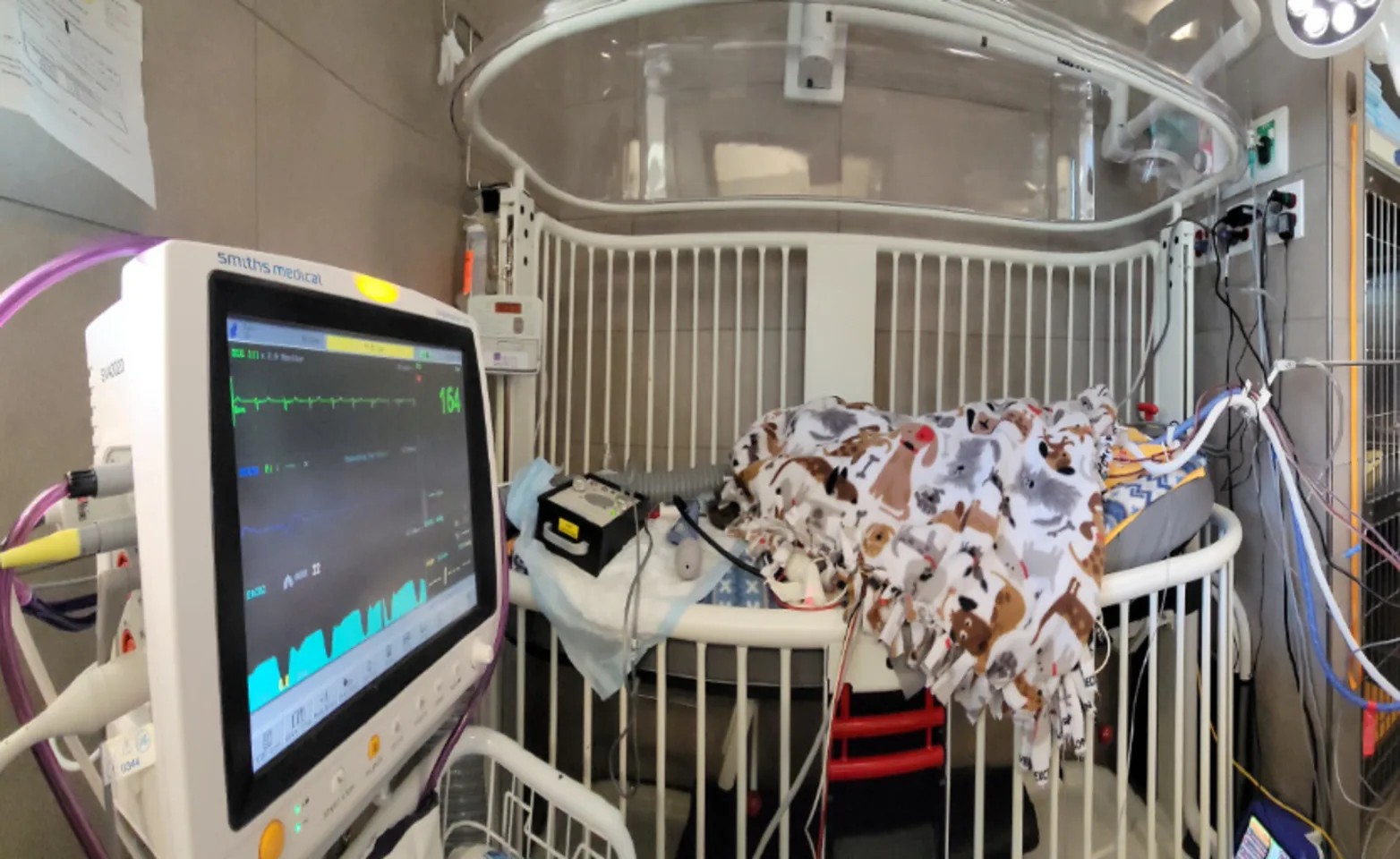ARISE Veterinary Center - Queen Creek

We’re proud to be one of only two facilities in Arizona offering emergency extracorporeal blood purification (ECT)—and the only one available on an emergency basis. Our specialists are available for consultation and support with ECT cases, including hemodialysis and plasma exchange.
How Hemodialysis Works and is Applied in Veterinary Medicine
In health, the kidneys regulate fluid balance and remove metabolic waste products from the bloodstream. Animals with diseased kidneys cannot perform these functions, causing metabolic waste and toxins to accumulate within the bloodstream, contributing to a syndrome termed uremia.
Hemodialysis is the process of exchanging water, solutes, and toxins across a semipermeable membrane (artificial kidney), allowing removal of waste products and toxins from the blood and restoration of the patient’s electrolyte and acid-base derangements from the dialysate water. Hemodialysis is the most effective treatment available for patients with uremia, refractory acute renal failure, life-threatening overhydration, or acute toxicities.
Indications for Hemodialysis
Hemodialysis provides a new standard of care for animals with diseased kidneys as well as a variety of other clinical conditions for which there are no effective medical alternatives, including:
Severe acute kidney injury
Acute poisoning (toxin specific)
Severe overhydration and fluid overload
Severe electrolyte derangements
Severe chronic renal failure
Timing of Dialysis Initiation
While the reasons are easy to define, the exact timing of the initiation of dialysis is controversial. However, dialysis commenced earlier in the disease process leads to superior outcomes by preventing the adverse systemic effects of uremia, therefore dialysis should not be considered a last resort or salvage procedure.
Goals of Dialysis
Acute kidney injury is the most common use of hemodialysis in veterinary patients. Hemodialysis extends the window of opportunity for renal repair indefinitely. Dialysis does not fix the kidney injury per se, it simply provides the injured kidney time to repair. It is often this lack of time and subsequent clinical decline from uremia that unfortunately results in euthanasia in veterinary medicine. Hemodialysis is a viable alternative.
Length of Treatment & Prognosis
Length of treatment is difficult to determine as it depends on the cause of the acute renal injury and the degree of renal damage. However, clients should be emotionally and financially prepared for on average 2-5 sessions over 1-3 weeks. The prognosis, similarly, varies depending on the cause of the acute renal injury as well as comorbid conditions, therefore, risks/benefits to commencing dialysis need to be considered on a case-by-case basis.
